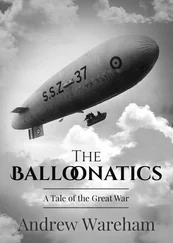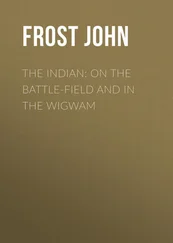Eugene Ware - The Indian War of 1864
Здесь есть возможность читать онлайн «Eugene Ware - The Indian War of 1864» весь текст электронной книги совершенно бесплатно (целиком полную версию без сокращений). В некоторых случаях можно слушать аудио, скачать через торрент в формате fb2 и присутствует краткое содержание. Жанр: Историческая проза, на английском языке. Описание произведения, (предисловие) а так же отзывы посетителей доступны на портале библиотеки ЛибКат.
- Название:The Indian War of 1864
- Автор:
- Жанр:
- Год:неизвестен
- ISBN:нет данных
- Рейтинг книги:3 / 5. Голосов: 1
-
Избранное:Добавить в избранное
- Отзывы:
-
Ваша оценка:
- 60
- 1
- 2
- 3
- 4
- 5
The Indian War of 1864: краткое содержание, описание и аннотация
Предлагаем к чтению аннотацию, описание, краткое содержание или предисловие (зависит от того, что написал сам автор книги «The Indian War of 1864»). Если вы не нашли необходимую информацию о книге — напишите в комментариях, мы постараемся отыскать её.
The Indian War of 1864 — читать онлайн бесплатно полную книгу (весь текст) целиком
Ниже представлен текст книги, разбитый по страницам. Система сохранения места последней прочитанной страницы, позволяет с удобством читать онлайн бесплатно книгу «The Indian War of 1864», без необходимости каждый раз заново искать на чём Вы остановились. Поставьте закладку, и сможете в любой момент перейти на страницу, на которой закончили чтение.
Интервал:
Закладка:
Chapter VI.
The Settlement at Cottonwood Springs – MacDonald's Ranch – Cutting Trees – October 31, 1863 – Building Barracks – Building Quarters and Stables – November 3, 1863 – The Election – Thanksgiving – The Gilmans – Indian Names – Masonic Ceremonies – Skunks – Artillery and Indians – Indian visitors – Loyal League – December 15, 1863
COTTONWOOD SPRINGS, when we arrived there, was one of the important points on the road. MacDonald, who had a year or so before our arrival, built, as stated, a cedar-log store-building. The main building was about twenty feet front and forty feet deep, and was two stories high. A wing 50 feet extended to the west. The latter was, at the eaves, about eight feet high and fifteen feet deep in the clear. Around it in the rear was a large and defensible corral, which extended to the arroyo coming out of the canyon. It had been a good trading-point with the Indians, and there was a stage station there, and a blacksmith shop kept by a man named Hindman. In the stage station was a telegraph office. There was also on the other side of the road a place where canned goods and liquors were sold, kept by a man named Boyer, who had lost a leg, and whom the Indians called "Hook-sah," which meant "cut leg." MacDonald had dug, in front of his store, and cribbed up, an inexhaustible well, which was said to be forty-six feet deep; it was rigged with pulley, chain, and heavy oaken buckets. MacDonald and those at the place had formerly had a good trade with the Indians, but now it was all ended, and they were in danger.
We immediately pitched our tents, and marked out the quadrangle for company quarters, officers' quarters, and guard-house. The next day was spent in unloading our supplies, putting them under shelter, and organizing the squads for going up into the canyon for cedar logs. We had only about seventy-five men that were really effective for hard work, but many of them were very skillful in the use of the ax, and many knew how to handle tools. The end room of the wing of MacDonald's cedar structure was used as "pilgrim quarters." It had a heavy clay roof, and a large simple cast-iron cook stove, with sheet-iron stovepipe running up through the roof. Our "Post Headquarters" used that room for office and mess, but we slept in our tents. On October 13th we started up the canyon; six of our men had worked in the pineries, and were expert axmen. They went to work as three couples to fell the trees. Their axes were sharp, the weather stimulating, and they tumbled the trees rapidly. Other squads trimmed the branches; others with a crosscut saw worked in constant reliefs, cutting the logs the right length. Our quarters had been planned to be built of twenty-foot logs. These logs were about a foot in diameter. We had our pick. After getting down a lot of the logs, we organized squads with our team mules to snake them out of the canyon. The men made rapid work, and every night every man who had worked in the canyon got a good snifter from my barrel of 1849 whisky. We were racing against the weather, and I never saw men work with more activity. The main barracks for the men were designed as six square rooms, which made a long building one hundred twenty feet long by twenty feet wide on the outside. Among our number were those who had built log cabins, and knew how to "carry up a corner," as the expression was. So the logs were snaked down, and with assistance the men at the corners notched them up, and it was but a few days before the cabins seven feet high in the clear were ready for the roof. The best logs were kept out to build Company Headquarters with. In a little while we had the pole roof on, with the interstices filled with cedar boughs, and about ten inches of good hard clay tamped down; but we were still without doors and windows, although we had places for them sawed out in the log walls. The large logs, of which there were many over twelve inches in diameter, were reserved for lumber. We dug out a place on the bank of the arroyo as a saw-pit, and having two whip-saws, the men were started sawing out lumber one inch in thickness. The men took turns at the top, and the bottom, with the saw, sawing the length of a log. Then they were relieved by two others, so that the whip-saws were kept running all the time, but no one had more than one round a day at that particular work. With smaller cedar poles cut, and used as joists, we soon had bunks made in each of the rooms of our company's quarters. We had drawn "hay bags" from the quartermaster at Fort Kearney. These we used as straw-ticks, and filled with whatever the soldiers wanted to put in. The boys chose partners, and began to occupy the bunks. We had drawn a lot of sheet-iron for the purpose of making stoves, and stovepipes. Our blacksmith rapidly fixed the company up with sorts of funnel-shape sheet-iron stoves, in which the cedar chips burned like tinder. These company quarters were rather close, there being no communication between the different rooms. Sixteen men occupied a room, and between the bunks was a space where they had their mess-cooking, and their mess-eating. With the whipsaw, lumber enough was got out for a door in front of each room, and a window shutter in the rear.
One or more non-commissioned officers were established in each room, and the north end room was a non-commissioned officers' mess. In our kits were two broadaxes, and there were men who knew how to use them, so the Company Headquarters building was made of logs that had been "scored and hewed." The scoring was a simple process. The man stood on the top of the log, and chopped into a line through the whole length of the log, and then the man with the broadax hewed in and straightened it. By working in reliefs, in a few days the Company Headquarters building, eight feet high and twenty feet square, with a puncheon floor and cedar door, and with an oil-paper window, was ready. Then we put up a house in which to store supplies. This was forty by twenty. Then across the road – for we had built alongside of the road and quite near to MacDonald's ranch – across the road we put up a hospital building of twenty-foot square-hewed logs, with a sort of porch. These buildings were all "chinked and daubed." That is, blocks and chips were driven in between the logs, and clay was mixed into mortar by the wagon-load down near the springs, and hauled up, and the walls plastered up inside and out so that they were air-tight. Afterwards, the roof having become settled, the clay was dampened and plastered with a trowel. Then we built a guard-house twenty feet square, divided across the middle so that the back half of it was as dark as a dungeon, with a big heavy plank door with hinges extending across, which our blacksmith had made. Then it became necessary to look after our horses, and to build a stable to protect them. Thesewere built upon the palisade principle. We made the outline of our stable just about two hundred feet long, although it bent with an angle so that we could fill in the other angles, and have a square with an open interior. We dug a trench three feet deep. We cut the posts only twelve feet long, and putting them on end in the trench, we filled the trench, leaving the posts standing side and side. When the walls were up, which did not require very long time, the tops of the posts were sawed off level, and a plate-rail spiked on top of them, with spikes made by the blacksmith, one to a log. Upon this we placed a roof, and then fitted up the interior with poles, and got our horses under cover. Between these upright palisades we drove blocks, put in filling, and on the west and north plastered them up. It was very interesting to watch work go forward in such a case as this. There were men in the company who collectively knew how to do everything, and do it well. Everyone was desirous of getting fixed before the cold weather, and there was no laziness or shirking.
Читать дальшеИнтервал:
Закладка:
Похожие книги на «The Indian War of 1864»
Представляем Вашему вниманию похожие книги на «The Indian War of 1864» списком для выбора. Мы отобрали схожую по названию и смыслу литературу в надежде предоставить читателям больше вариантов отыскать новые, интересные, ещё непрочитанные произведения.
Обсуждение, отзывы о книге «The Indian War of 1864» и просто собственные мнения читателей. Оставьте ваши комментарии, напишите, что Вы думаете о произведении, его смысле или главных героях. Укажите что конкретно понравилось, а что нет, и почему Вы так считаете.












